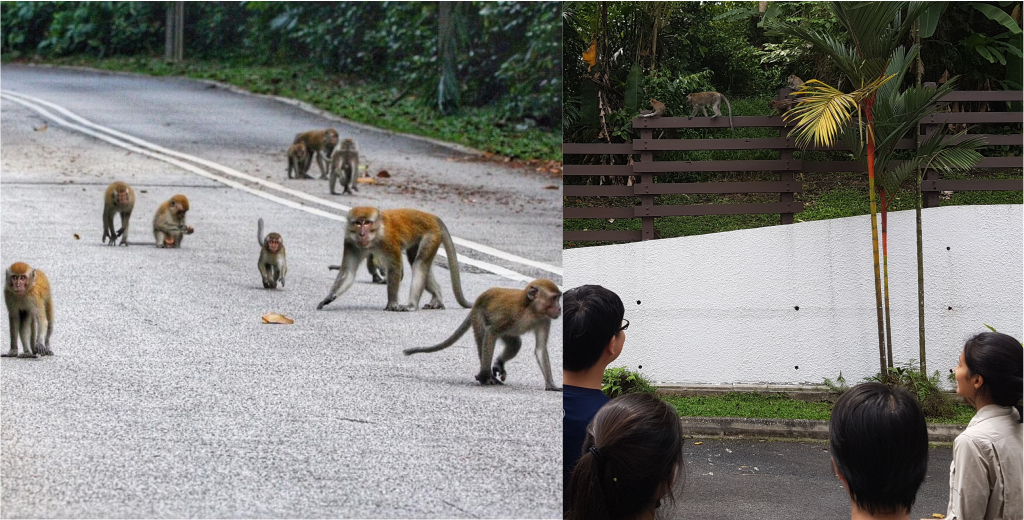If you asked a group of Singaporeans how they feel about wild monkeys, chances are half of them may view them as aggressive and dangerous.
And it's hard to blame them, really — look at these incidents that happened earlier this year:
If you happen to belong to that camp, here’s something you might find hard to believe: these monkeys are not actually dangerous or aggressive by nature.
There are an estimated 2,000 long-tailed macaques (that's their more specific name) in Singapore — although that number is circa 2012 and it's not clear if there are now more or fewer, since over the years, residents' complaints to the Agri-food and Veterinary Authority has resulted in a significant number of them being culled.
Macaques are highly adaptable and inhabit the edges of forested areas. Urbanisation in Singapore has encroached on these green spaces and has brought them into closer contact with humans who, unfortunately, are not all sufficiently aware of how to behave appropriately when they encounter macaques.
The intelligent macaques then quickly picked up the wrong habits after experiencing this irresponsible human behaviour (such as feeding), which trained them to approach humans, and also to seek food from us instead of the forest — where they actually should be obtaining their diet.
With the right wildlife etiquette, it is possible for Singaporeans to live peacefully with macaques, despite our limited space and close proximity in an increasing number of cases.
Which brings us to introduce you to the Long-tailed Macaque Working Group, a group of volunteers in Singapore that is doing everything it can to educate Singaporeans in understanding macaques better. The working group also includes members from the Jane Goodall Institute of Singapore (JGIS), the Animal Concerns Research and Education Society (Acres), the Agri-food and Veterinary Agency (AVA), Wildlife Reserves Singapore and National Parks Board Singapore (NParks).
It was formed, shares its co-chairperson Andie Ang, on the basis of a shared belief that Singaporeans *can* live in harmony with our urban wildlife.
Here's a photo of some members from the Long-tailed Macaque Working Group with Second Minister for National Development (and also Minister for Social & Family Development) Desmond Lee at this year's Festival of Biodiversity:
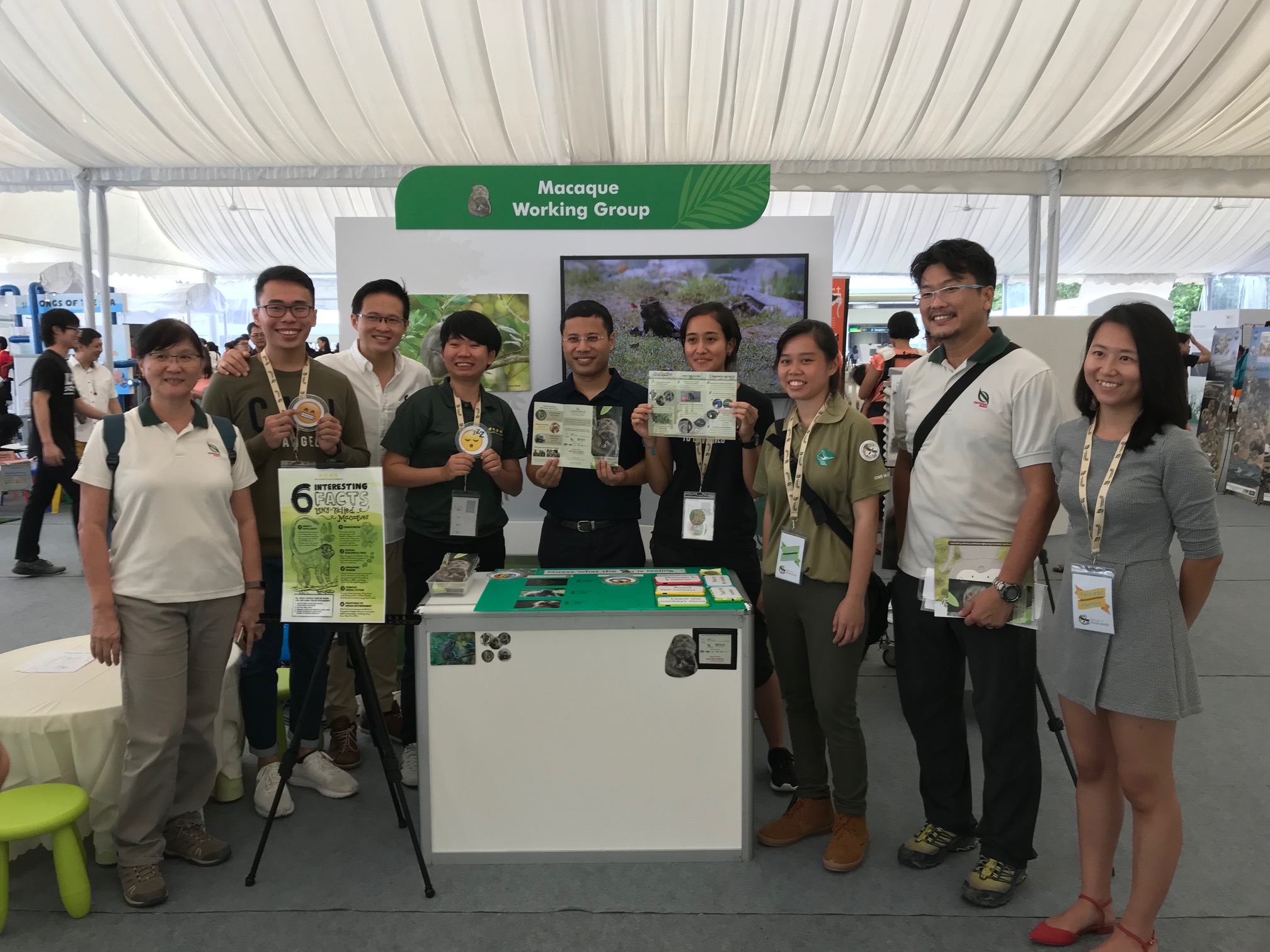 Photo by Gloria Ong (Sabrina on Minister Desmond Lee's right, both co-chairpersons of Long-tailed Macaque Working Group, Dr Adrian Loo from NParks and Andie are on the most right of the photo)
Photo by Gloria Ong (Sabrina on Minister Desmond Lee's right, both co-chairpersons of Long-tailed Macaque Working Group, Dr Adrian Loo from NParks and Andie are on the most right of the photo)
Monkey Guards Programme
To this end, the working group conducts macaque monitoring and public outreach — over the past year, its flagship project has been something called the Monkey Guards Programme.
The Monkey Guards Programme is led by a primate researcher from JGIS, Sabrina Jabbar, who started rescuing wild macaques with Acres back in 2009. After working on primates for almost a decade, Sabrina can read macaques' facial expressions to understand what they are trying to convey to us (e.g. they are scared, friendly or stressed). The Monkey Guards Programme was first trialled three years ago when human-macaque conflicts broke out in some residential houses along Bukit Timah Nature Reserve. Back then, Sabrina, working with other members from the Acres macaque rescue team, successfully reduced the number of macaque visits to the area after residents were taught the appropriate behaviour.[related_story]
Last year, this was one of the six shortlisted environmental projects supported by the inaugural #OCBCCares Fund for the Environment. With the funding, the working group was able to extend the programme to the Dairy Farm estate, assessed to be the area that needed assistance most urgently.
And with the financial support, the working group made infographics and educational brochures, took part in events and roadshows and were also able to reimburse volunteers for their time spent doing monkey-guarding activities as well as door-to-door residential surveys.
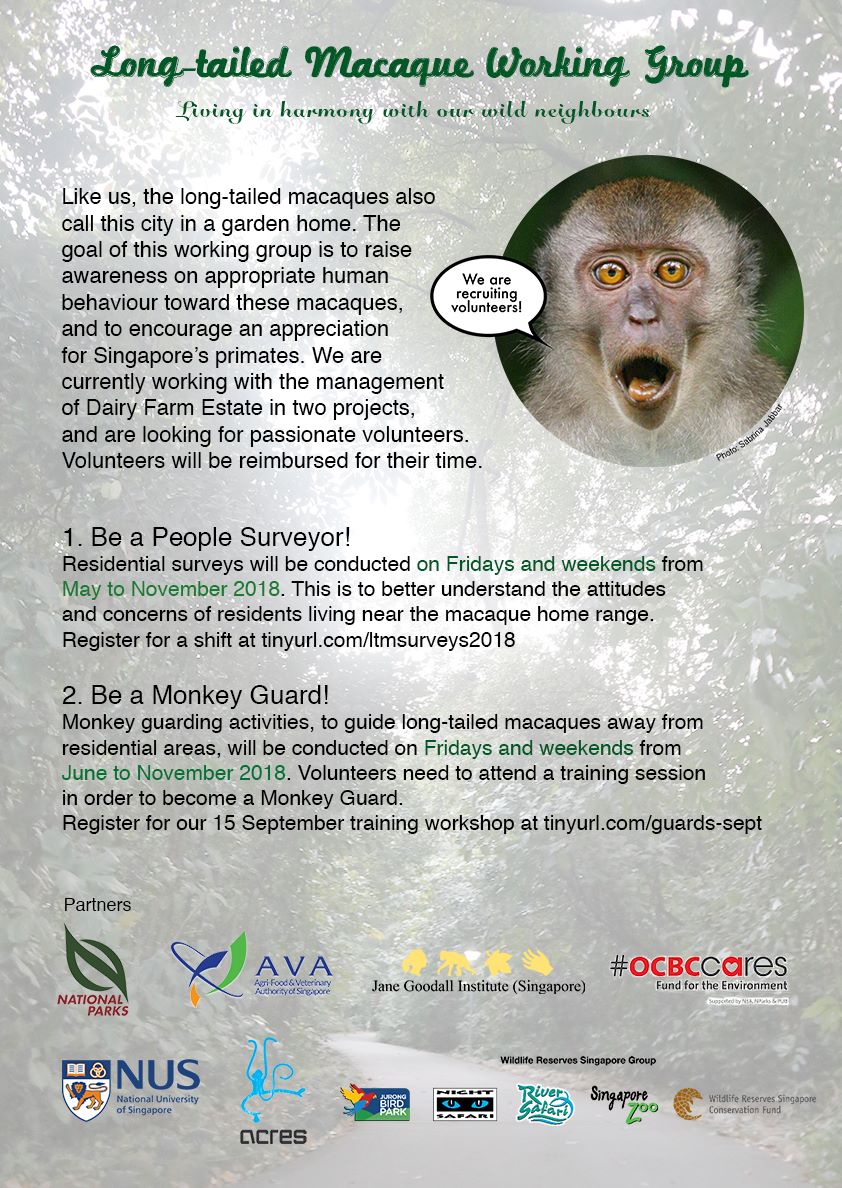 Poster from Sabrina Jabbar's Facebook post
Poster from Sabrina Jabbar's Facebook post
When monkey business is a serious skill
Under the programme, Sabrina conducted a series of workshops to train some 68 participants to become "Monkey Guards" — these are trained to observe macaques, read their moods and intentions, and eventually help guide them away from residential estates and back into the forest.
Here's what they learn in greater detail:
- Interpreting macaque facial expressions: what are monkeys trying to tell us?
- Anticipating and preventing negative interactions between people and monkeys by deducing macaque facial expressions.
- Skills and techniques to safely guide monkeys away from residential areas and back into the forests.
- Learn the appropriate behaviour and ethics when encountering urban wildlife (e.g. do not feed them; do not carry plastic bags; keep a distance of at least one car-length (4-5m); proper trash management at home, etc).
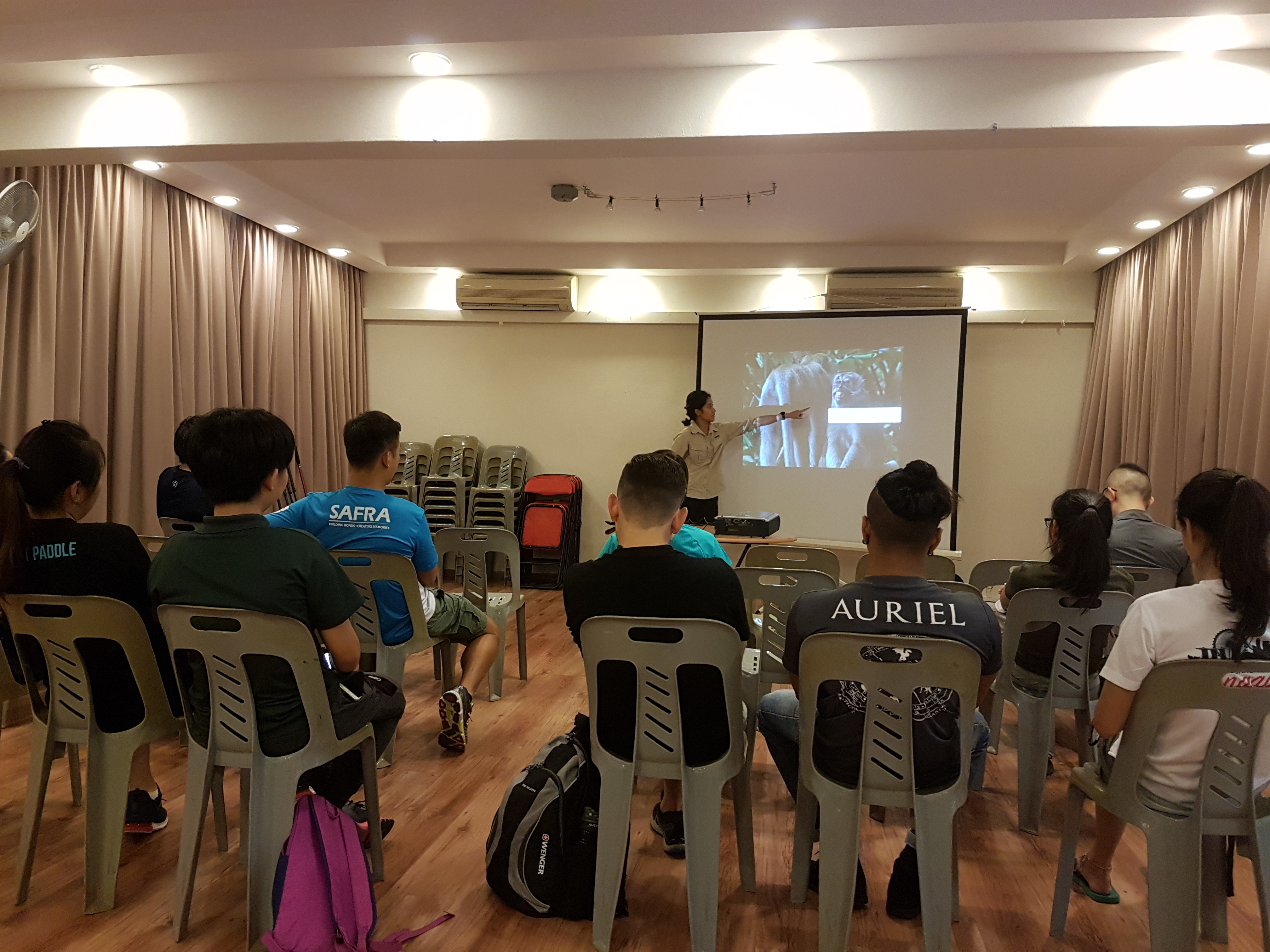 Photo from Jane Goodall Institute (Singapore)
Photo from Jane Goodall Institute (Singapore)
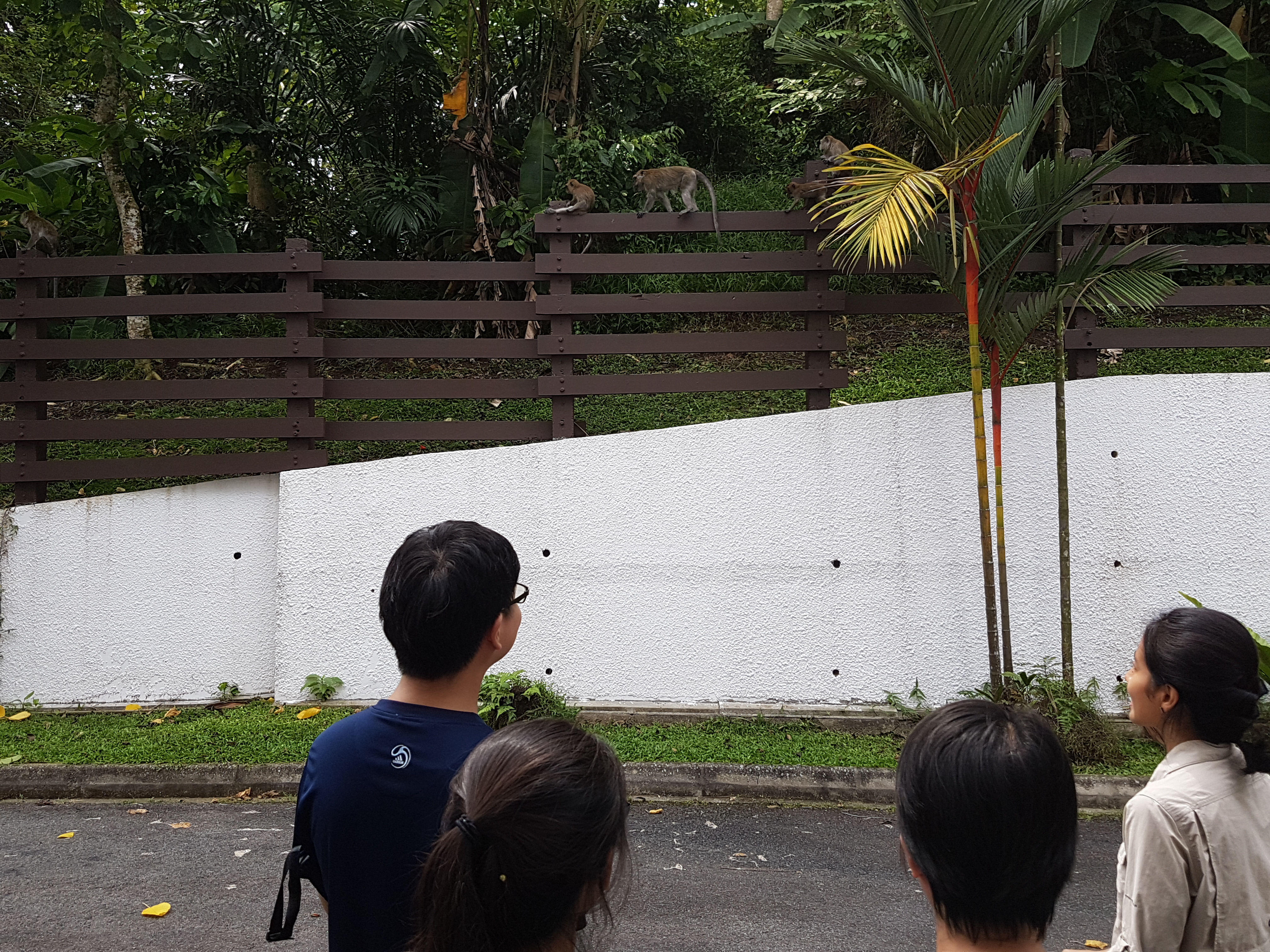 Photo from Jane Goodall Institute (Singapore)
Photo from Jane Goodall Institute (Singapore)
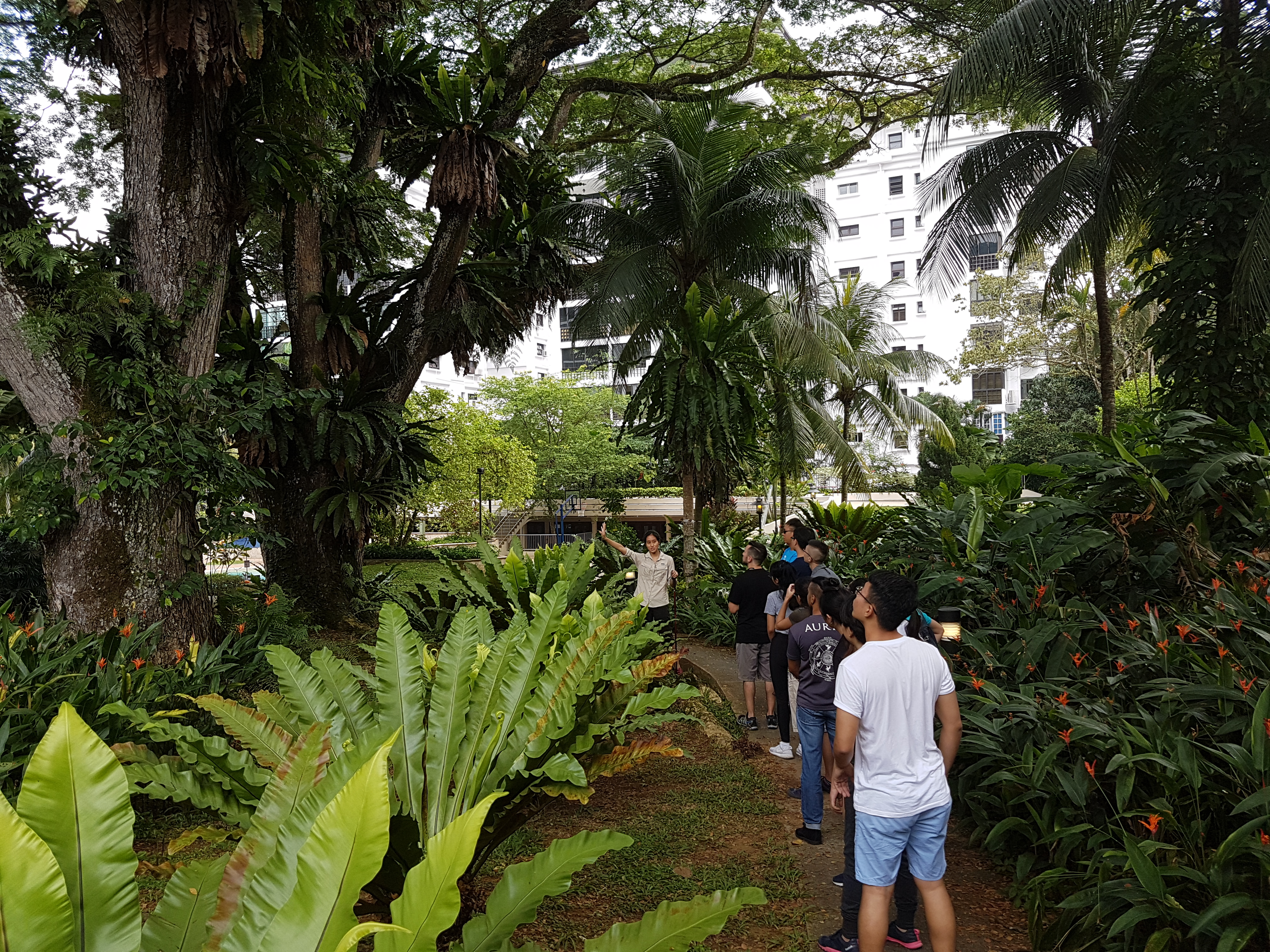 Photo from Jane Goodall Institute (Singapore)
Photo from Jane Goodall Institute (Singapore)
 Photo courtesy of Sabrina Jabbar
Photo courtesy of Sabrina Jabbar
At the workshop, participants also use hiking poles as a tool to herd the macaques away by waving or hitting the pole on the ground. This process has to be carried out repeatedly to act as a negative reinforcement on the macaques.
Besides working on residential areas, Sabrina also trained the staff at Wildlife Reserves Singapore, who also encounter macaques from the surrounding Mandai forests.
Changing mindsets is the greatest challenge
The greatest challenge that the working group faces is to encourage people to put aside their preconceptions and negative associations that they may have with macaques, and to take the added step of joining the workshop to learn about them.
And of course, not to mention the people who stubbornly just want macaques "removed" from our living spaces entirely.
Andie tells Mothership:
"Different people perceive monkeys differently based on their prior experiences, which can be good or bad. There are people who like monkeys, there are people who dislike them, and there are others who are neutral. The challenge is getting buy-in support from people who already had a deeply-rooted negative perception of monkeys and who wants urban wildlife to be removed."
Moving forward
One year on, the working group has seen results. More residents are now equipped with the knowledge to live closely with their special neighbours, while Andie tells us that the macaques, like all creatures of habit, are starting to realise that they should keep a distance from humans:
"Monkey Guarding provided a holistic approach where residents and other volunteers are taught ways to actively deter macaques from entering houses. Macaques have also learned that there are barriers that they cannot cross — fully made possible by negative reinforcement (and no feeding)."
With the seed funding from OCBC coming to an end in November, Andie says the team continues to seek sources of support to sustain and develop the monkey guards programme:
"We would like to grow the programme to reach out to more people in other residential areas which are next to forested areas where residents may encounter urban wildlife. Ideally we would also like to hold a speaker series where we bring in speakers to share their knowledge on human-wildlife interactions in the region."
If you're interested to find out more about the working group, the Monkey Guards Programme or are keen to support it in any other way, you can contact Sabrina/ Andie or follow updates from JGIS Facebook page.
Top photo collage from Jane Goodall Institute (Singapore) and Sabrina Jabbar Facebook.
If you like what you read, follow us on Facebook, Instagram, Twitter and Telegram to get the latest updates.
